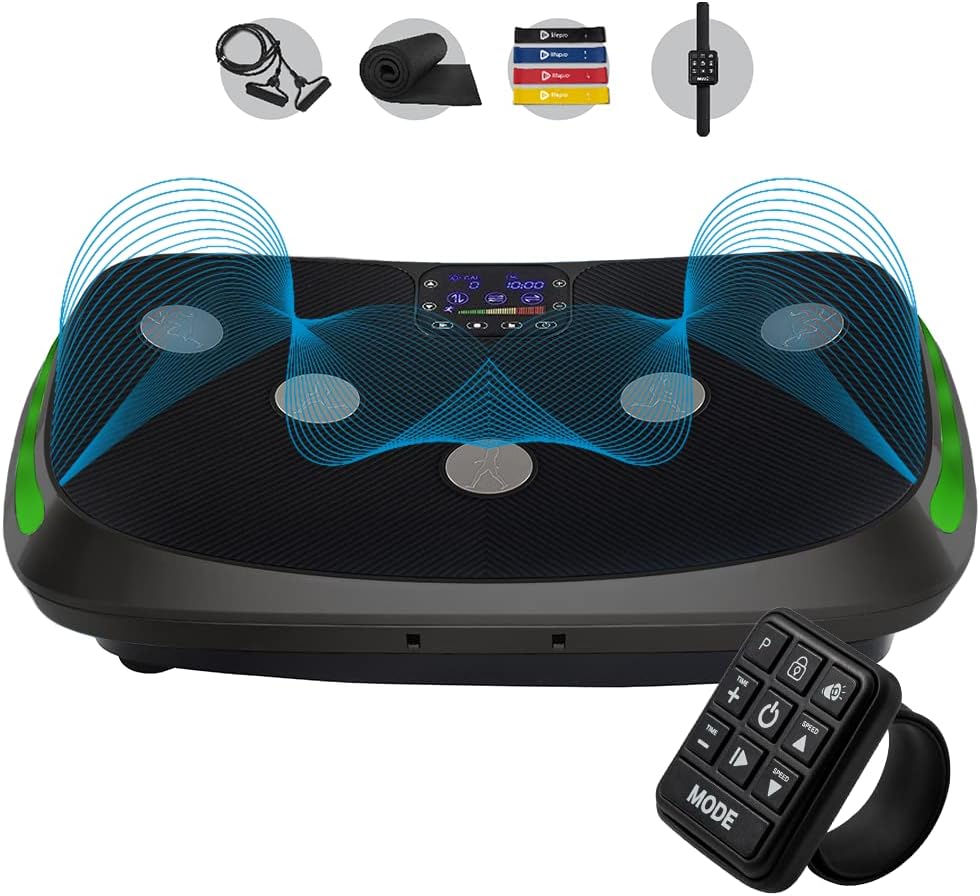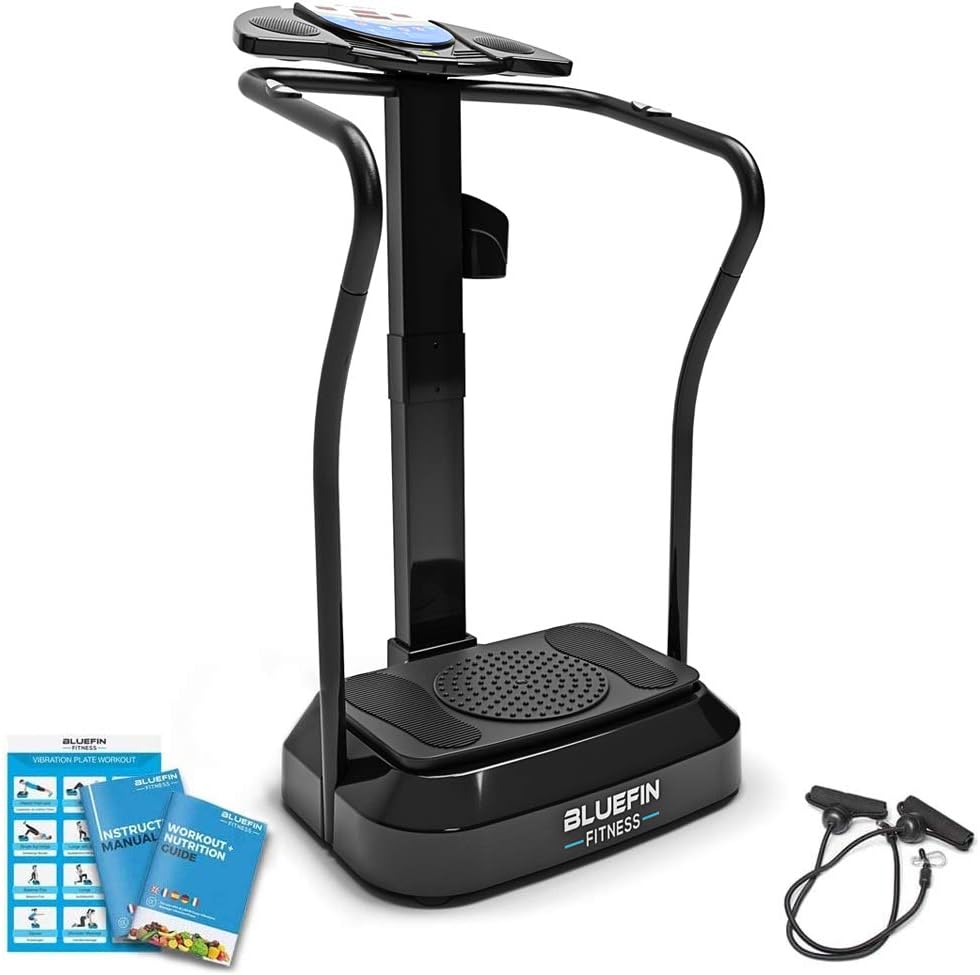
The 10 Best Exercises To Improve Balance Using A Vibration Plate
Did you know that you can significantly improve balance using a vibration plate? Are you looking to improve your balance and mobsignificantlyility as you age? Maybe you have fallen or noticed that you are not as steady as you used to be.
Vibration Plates are an amazing tool for improving balance and decreasing risk of falls and injuries. Research has shown that vibration plates can help improve balance, coordination, and flexibility.

In this blog, we will explore the benefits of using vibration plates for balance training, as well as give the latest research surrounding the use of vibration plates to improve balance and overall mobility. So, if you’re ready to get your balance in check, read on!
The Importance of Balance
Maintaining good balance is often taken for granted until it starts to diminish, but it is a fundamental aspect of our overall physical well-being. Balance is not only essential for performing everyday activities, such as walking or climbing stairs, but it also plays a vital role in preventing falls and injuries, especially as we age.
As we get older, our ability to maintain a strong sense of balance naturally declines. This decline can be attributed to various factors, including muscle weakness, reduced flexibility, and decreased coordination.
Incorporating balance training into your fitness routine can have numerous benefits, from improving posture and stability to enhancing overall physical performance. So, if you want to stay active, independent, and injury-free as you age, start focusing on improving your balance!
In fact, the CDC reports that “In the United States, about one in four adults (28%) age 65 and older, report falling each year. This results in about 36 million falls each year.”
Improving balance is critical for reducing the risk of falls and maintaining functional independence.
By focusing a portion of your exercise regimen on balance training, you can strengthen the muscles that support posture and stability, thereby minimizing the risk of accidents.
Why Does our Balance Decline With Age?
- Decreased muscle mass and strength: As people age, they may experience a decline in muscle mass and strength, typically ranging from 1% to 2% loss per year after the age of 50. By the time an individual reaches their 70s, they may have experienced a reduction in muscle mass of around 20% to 40%.
- Changes in sensory systems: The decline in sensory systems as we age can vary, but by the age of 65, about one in three people experience some degree of hearing loss, and approximately one in four may have vision impairments, especially related to glare sensitivity, depth perception, and peripheral vision.
- Decline in bone density: Osteoporosis affects around 10% of women aged 60, 20% of women aged 70, and 40% of women aged 80. For men, the prevalence is lower but still significant, with about 2-8% affected by osteoporosis by the age of 60.
- Neurological changes: As people age, the brain’s processing speed and coordination abilities may decline, with some studies suggesting a reduction of 10% or more in cognitive processing speed from middle age to late adulthood.
According to research conducted by the National Institute on Aging, balance exercises play a crucial role in reducing the risk of falls among older adults. Engaging in regular balance training has been found to improve stability, decrease the likelihood of falls, and enhance overall physical function.
Research published in the Journal of Geriatric Physical Therapy suggests that individuals with better balance have a reduced risk of developing chronic conditions associated with aging, such as osteoporosis and cardiovascular diseases. This further emphasizes the importance of maintaining good balance as we age.
Here’s What The Research Says:
Vibration plates have gained significant attention in recent years for their potential benefits in balance training. Several research studies have investigated the effectiveness of vibration plates in improving balance, especially among older adults.
Here are five notable research articles that provide valuable insights into the relationship between vibration plates and balance:
- “Whole-body vibration training improves balance and muscle strength in older adults: a systematic review and meta-analysis” – This study, published in the Journal of Aging and Physical Activity, analyzed multiple research papers to conclude that vibration training effectively improves both balance and muscle strength in older adults.
- “The effects of whole-body vibration exercise on balance, balance confidence, and gait in individuals with chronic stroke: a randomized controlled trial” – In this randomized controlled trial published in the Journal of Stroke and Cerebrovascular Diseases, researchers found that whole-body vibration exercise significantly improved balance, balance confidence, and gait among individuals with chronic stroke.
- “Effect of whole-body vibration exercise on balance, mobility, and falls efficacy in older people with balance problems: a randomized controlled trial” – Published in the Journal of Clinical Rehabilitation, this study showed that whole-body vibration exercise significantly improved balance, mobility, and falls efficacy in older adults with balance problems.
- “Effects of a 12-week vibration training program on muscle function and postural control in elderly women” – This study, published in the Journal of Aging and Physical Activity, found that a 12-week vibration training program led to significant improvements in muscle function and postural control among elderly women.
- “Whole-body vibration training in individuals with stroke: a systematic review” – This systematic review, published in the Journal of Neurologic Physical Therapy, examined various studies to conclude that whole-body vibration training can enhance balance, muscle strength, and functional mobility in individuals with stroke.
These research articles provide compelling evidence supporting the effectiveness of vibration plates in improving balance, making them a valuable tool for individuals seeking to enhance their balance skills and prevent falls, especially as they age.
10 Best Vibration Plate Exercises For Improving Balance
- Single-leg standing: Stand on the vibration plate with one foot, keeping your knee slightly bent. Hold onto a stable surface if needed for support. The vibrations will challenge your balance and stability, helping to improve core strength and overall balance.
- Toe taps: Stand on the vibration plate and lift one foot off the ground. Tap the toes of your lifted foot on and off the plate while maintaining your balance. Alternate between feet to work both sides equally.
- Squats: Stand on the vibration plate with your feet shoulder-width apart. Bend your knees and lower your body into a squat position, keeping your weight in your heels. Use the vibrations to challenge your balance and engage your core muscles as you return to the standing position.
- Lateral lunges: Step one foot to the side while keeping the other foot on the vibration plate. Bend the knee of the lunging leg, keeping your other leg straight. Use the vibrations to challenge your balance and stability as you switch sides.
- Calf raises: Stand on the vibration plate with your feet hip-width apart. Slowly rise up onto your tiptoes, then lower back down. Use the vibrations to challenge your balance and engage your calf muscles.
- Standing leg swings: Stand sideways on the vibration plate, holding onto a stable surface for support if needed. Swing your leg forward and backward, using the vibrations to challenge your balance and stability. Switch sides to work both legs equally.
- Plank: Place your hands on the vibration plate, keeping your body in a straight line from head to toe. Engage your core and hold this position, using the vibrations to challenge your balance and stability.
- Side plank: Lie on your side with one forearm on the vibration plate and your feet stacked on top of each other. Lift your hips off the ground, creating a straight line from head to toe. Use the vibrations to challenge your balance and engage your core.
- Knee tucks: Sit on the vibration plate with your knees bent and your feet off the ground. Lean back slightly and engage your core as you lift your knees toward your chest, using the vibrations to challenge your balance and stability.
- Standing twists: Stand on the vibration plate with your feet hip-width apart. Twist your upper body from side to side, using the vibrations to challenge your balance and engage your core muscles.

You May Also Enjoy These Articles:
“Benefits of Vibration Plate Workouts For Full Body Strength“







